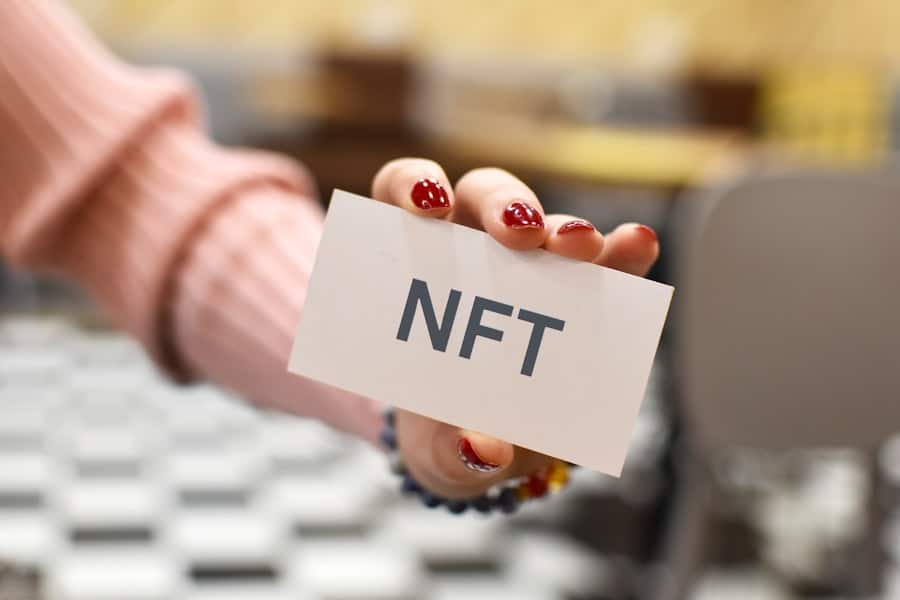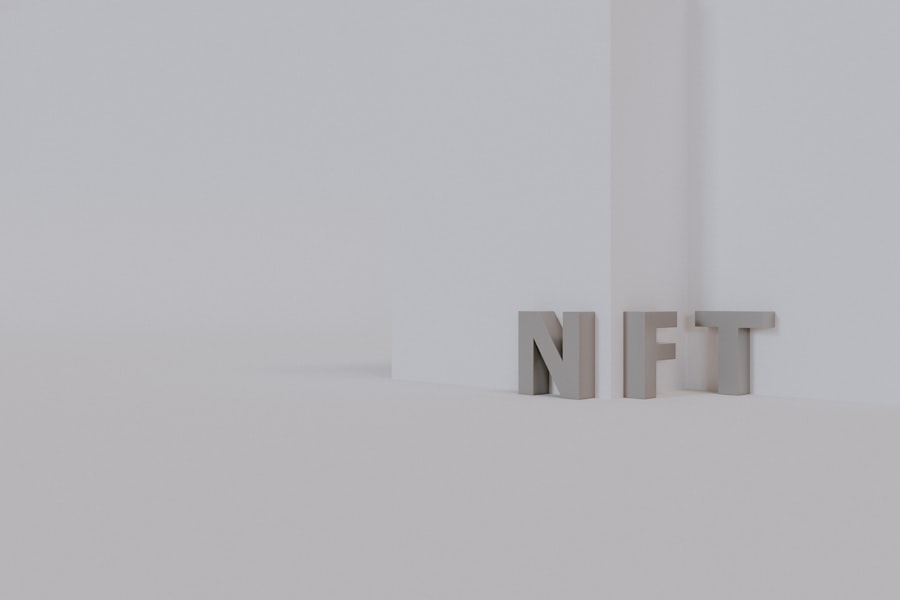The advent of Non-Fungible Tokens (NFTs) has ushered in a transformative era for the gaming industry, fundamentally altering how players interact with digital assets.
This innovation has sparked a wave of interest among developers and players alike, as it introduces new dimensions of ownership, scarcity, and value to the gaming experience. As the gaming landscape evolves, the integration of NFTs is becoming increasingly prevalent. Major gaming companies and independent developers are exploring ways to incorporate these tokens into their ecosystems, creating opportunities for players to buy, sell, and trade in-game assets in ways that were previously unimaginable.
The potential for NFTs to enhance player engagement and create new revenue streams is driving this trend forward. With the rise of blockchain technology, the gaming industry is on the brink of a significant shift that could redefine how games are developed, played, and monetized.
Key Takeaways
- NFTs are non-fungible tokens that represent ownership of unique digital assets and have gained popularity in the gaming industry.
- NFTs have the potential to revolutionize in-game assets by allowing players to truly own and trade their digital items outside of the game environment.
- NFTs enable players to have true ownership of their in-game assets, giving them the ability to buy, sell, and trade items with other players.
- NFTs are driving the creation of decentralized gaming economies, where players have more control over the value and distribution of in-game assets.
- NFTs present new monetization opportunities for gamers, allowing them to earn real money by creating, owning, and trading in-game assets.
The Impact of NFTs on In-Game Assets
The introduction of NFTs into gaming has revolutionized the concept of in-game assets. Traditionally, players have invested time and money into acquiring virtual items, but these assets were often locked within the confines of a specific game. Players had no real ownership; they could not transfer or sell their items outside the game environment.
With NFTs, however, players can now possess true ownership of their digital assets. Each NFT is verifiable on the blockchain, ensuring that players can prove their ownership and authenticity. This shift has profound implications for the value of in-game assets.
For instance, a rare skin or weapon that was once merely a cosmetic enhancement can now be bought and sold on secondary markets for significant sums. Games like “Axie Infinity” have demonstrated this potential by allowing players to breed, trade, and battle creatures known as Axies, with some rare Axies selling for thousands of dollars. This not only incentivizes players to engage more deeply with the game but also creates a vibrant economy around these digital assets.
The scarcity created by NFTs means that certain items can become highly sought after, leading to increased player investment and engagement.
NFTs and Player Ownership in Gaming

Player ownership is one of the most compelling aspects of NFTs in gaming. The traditional model often leaves players feeling like mere renters of their digital possessions, as they have no control over how these assets are used or transferred. With NFTs, players gain genuine ownership rights over their in-game items.
This paradigm shift empowers gamers to make decisions about their assets without restrictions imposed by game developers or publishers. For example, consider a player who has invested countless hours into acquiring a unique sword in an MMORPG (Massively Multiplayer Online Role-Playing Game). In a traditional setup, if the game were to shut down or if the developers decided to alter the item’s value or availability, the player would lose everything.
However, with NFTs, that sword exists independently on the blockchain. The player can sell it, trade it with others, or even use it across different games that support interoperability. This newfound autonomy fosters a sense of agency among players and encourages them to invest more time and resources into their gaming experiences.
NFTs and Decentralized Gaming Economies
The integration of NFTs into gaming is paving the way for decentralized gaming economies that operate independently of traditional corporate structures. In these ecosystems, players can engage in peer-to-peer transactions without intermediaries, allowing for greater transparency and fairness in economic exchanges. This decentralization is facilitated by blockchain technology, which provides a secure and immutable ledger for all transactions.
Decentralized finance (DeFi) principles are increasingly being applied to gaming through NFTs. Players can stake their tokens or use them as collateral for loans within these ecosystems, creating new financial opportunities that extend beyond mere gameplay. For instance, platforms like “The Sandbox” allow users to create and monetize their own virtual experiences while also enabling them to trade land and assets as NFTs.
This not only democratizes access to game development but also allows players to earn real income from their creative endeavors.
NFTs and Monetization Opportunities for Gamers
The monetization potential of NFTs in gaming is vast and varied. Players are no longer limited to traditional methods of earning revenue through gameplay; they can now capitalize on their skills and investments in innovative ways. The ability to create, buy, sell, and trade NFTs opens up numerous avenues for gamers to generate income.
For example, content creators can design unique skins or items and sell them as NFTs directly to players. This model allows artists and developers to receive compensation for their work while providing players with exclusive content that enhances their gaming experience. Additionally, some games offer play-to-earn models where players can earn cryptocurrency or NFTs simply by participating in gameplay activities.
“Gods Unchained,” a trading card game, exemplifies this approach by allowing players to earn cards as they play, which can then be sold or traded on secondary markets.
NFTs and Cross-Platform Gaming

One of the most exciting prospects of NFTs in gaming is their potential for cross-platform compatibility. Traditionally, in-game assets are confined to specific titles or ecosystems; however, NFTs can transcend these boundaries due to their unique nature on the blockchain. This interoperability allows players to use their digital assets across multiple games and platforms.
For instance, imagine a scenario where a player acquires a rare helmet in one game that is also compatible with another game set in a different universe. This not only enhances the value of the asset but also enriches the player’s experience by providing continuity across different gaming environments. Projects like “Enjin” are already exploring this concept by enabling developers to create blockchain-based assets that can be utilized across various games within its ecosystem.
Such advancements could lead to a more cohesive gaming experience where players feel a deeper connection to their digital identities.
Challenges and Controversies Surrounding NFTs in Gaming
Despite the promising potential of NFTs in gaming, several challenges and controversies have emerged that warrant attention. One significant concern revolves around environmental sustainability. The energy consumption associated with blockchain transactions has raised alarms among environmentalists and gamers alike.
Many blockchains rely on proof-of-work mechanisms that require substantial computational power, leading to high carbon footprints. As awareness grows about climate change, developers are under pressure to adopt more sustainable practices or transition to eco-friendly blockchain solutions. Another contentious issue is the speculative nature of NFT markets.
While some players have successfully profited from trading NFTs, others have faced significant losses due to market volatility and hype-driven bubbles. The lack of regulation in this space raises questions about consumer protection and the potential for scams or fraudulent activities. Additionally, there are concerns about accessibility; not all players have the financial means to invest in high-value NFTs, which could create disparities within gaming communities.
The Future of NFTs in Gaming
Looking ahead, the future of NFTs in gaming appears both promising and complex. As technology continues to evolve, we can expect further innovations that enhance player experiences and expand the possibilities for digital ownership. Developers are likely to explore new ways to integrate NFTs into gameplay mechanics, creating more engaging experiences that leverage the unique properties of these tokens.
Moreover, as regulatory frameworks begin to take shape around cryptocurrencies and NFTs, we may see increased stability in markets and greater consumer protection measures implemented within gaming ecosystems. This could foster trust among players and encourage wider adoption of NFT technology across various genres and platforms. In conclusion, while challenges remain on the horizon, the integration of NFTs into gaming holds immense potential for reshaping how players interact with digital assets and each other.
As this technology matures, it will be fascinating to observe how it influences not only game design but also player culture and community dynamics within the ever-evolving landscape of interactive entertainment.
In the rapidly evolving world of digital assets, NFTs are not only reshaping gaming economies but also influencing other tech sectors. For instance, the competition between major tech giants in the wearable technology market is heating up, as discussed in the article Apple Watch vs Samsung Galaxy Watch. This article highlights how innovation and consumer demand drive advancements in technology, similar to how NFTs are pushing the boundaries in gaming. Both sectors demonstrate the dynamic interplay between technology and consumer engagement, showcasing how digital advancements are transforming traditional markets.
FAQs
What are NFTs?
NFTs, or non-fungible tokens, are unique digital assets that represent ownership or proof of authenticity of a specific item or piece of content, such as artwork, collectibles, or in-game items.
How are NFTs transforming gaming economies?
NFTs are transforming gaming economies by allowing players to truly own and trade in-game assets, such as skins, weapons, and characters, outside of the game’s ecosystem. This creates new opportunities for players to monetize their gaming experiences and for game developers to create new revenue streams.
What are some examples of NFTs in gaming?
Examples of NFTs in gaming include unique in-game items and collectibles, virtual real estate, and digital artwork created by players or game developers. These NFTs can be bought, sold, and traded on various NFT marketplaces.
What are the benefits of using NFTs in gaming economies?
The benefits of using NFTs in gaming economies include increased player ownership and control over in-game assets, the potential for players to earn real-world value from their gaming activities, and new opportunities for game developers to create and monetize unique digital content.
What are some challenges or concerns related to NFTs in gaming?
Challenges and concerns related to NFTs in gaming include issues of copyright and intellectual property rights, the environmental impact of blockchain technology used to create and trade NFTs, and the potential for fraud or scams in the NFT marketplace.

